Finally, I have now got hold of the Panasonic GF1 with it’s Lumix 14-45mm kit lens (Thanks to my friend CW) and the latest Olympus PEN E-PL1 with it’s M-Zuiko digital 14-42mm kit lens! Now, this shall be a FAIR COMPARISON, as much as possible, as both are with their standard kit zoom lenses.
I am writing this review of comparison between the two cameras in the SIMPLEST manner I can think of, yet hopefully good enough for the layman, and even for one who has ZERO knowledge of cameras and photography, to make a clearer decision between the two, i.e. WHICH TO BUY?
NO REVIEWER IS 100% BALANCED. So, make your own conclusions!
We have to understand that both cameras’ main target audience are NOT the Professionals. The main target audience are consumers, ordinary students, daddies, mummies… and photo enthusiasts who want something small to carry with them daily… yet something that way surpasses the usual compact digital cameras’ standards in image quality and handling.
We have also seen the Micro-four-thirds cameras landing in the bag of professionals as a leisure camera, second camera or a backup camera, and some use it for work like myself, or Kirk Tuck.
BUT this review is aimed NOT at the professionals.
In this review, I shot with both cameras set to iAuto Mode. I used them in my everyday life. I shoot like an ordinary Daddy, like what every dad would want to photograph his child. I used both cameras NO DIFFERENT from any of you out there. So, the images I am gonna present here are NO GALLERY PRINTS. :p
My Workflow:
Shot with both cameras using RAW, iAuto Mode. I used them in Normal Circumstances as an ordinary guy in his everyday life, shooting in shopping centres, shooting his own kid, shooting at home and wherever he goes. All images are converted to JPGs using Lightroom Beta 3 version in default mode with no additional modification to the files at all, not even exposure, just to show you what comes out straight from the cameras.
WHY SHOOT in iAUTO MODE?
These Micro Four Thirds cameras are meant to produce amazing pictures straight off the camera without having to adjust much settings. If I want a camera to adjust it’s settings as a playtime, it would be the Nikon D700 or the Nikon D3s. There is at least 100 menu options in them to choose from. Now, at least in my personal philosophy, I expect the camera to meet or exceed my expectations at it’s so-called most intelligent “iAuto Mode”!
iAuto Mode is supposedly much better than P (Program)Mode, or in Cantonese as a joke, what we call the “PUN” Mode (basically means “idiot mode”). It’s supposed to be much more intelligent than the P Mode. Now let’s see how “intelligent” each camera behaves… … here we go… …
NOTE: All images are uploaded in the highest tolerable resolution online in this blog possible for you to download and pixel-peep. To do that, keep clicking on image till you can right click and save the high resolution file.
1. Indoor Artificial Lighting Condition – Shopping Centers (Most digital cameras suck at this)
Verdict:
Digital cameras have always got a problem with reds. There are very few digital cameras that can reproduce red accurately. As both shots were shot in iAuto Mode, white balance was AWB(auto). In this instance, Olympus over-cooked the reds and Panasonic produced more neutral colors.
2. Action Shots Indoors using iAuto Mode
Verdict:
In handling the cameras, immediately you will feel that GF1’s auto-focusing is faster and seems more decisive and definite. Initial impression is that the GF1 “found” focus and snapped the shutter much faster than the E-PL1. BUT upon scrutinizing both cameras’ files in my computer, I have found that the GF1 may have activated it’s shutter much faster and easier than the E-PL1 but to my disappointment, the hit rates are just as bad as the E-PL1! The number of “useable” images shot in iAuto mode for both cameras, chasing after running kids, are just about the same amount! We are talking about nailing the focus.
Suggested Solutions:
A. Buy a DSLR which performs well through ISO3200 and above like the latest Canon 550D which is good through ISO6400
OR
B. Use ISO1600 on either the E-PL1 or GF1 coupled with a fast lens like the Lumix 20mm F1.7. Shoot RAW and convert using Lightroom or Photoshop and you get lesser noise than direct JPGs straight out of camera.
3. Macro Test, using the minimum focus distance on each lens
Verdict:
It is quite clear that the E-PL1’s 14-42mm kit lens has a much closer focusing distance which gives higher magnification though it underexposed. But just a little exposure adjustment either in-camera when shooting or in your computer will bring it’s shine back easily!
4. i-Auto Intelligence in using In-Body Image Stabilization and Lens Optical Stabilization in lowlight conditions
Verdict:
It’s not fair to say that Olympus’s in-body I.S. is better than the Panasonic lens’s O.S. here as the iAuto mode in both cameras gave a drastic difference in ISO, which results in different shutter speeds.
But what we can see here, and from all the above examples so far is that Panasonic tends to give a lower ISO which results in slower shutter speeds. In this instance, the intelligence in the E-PL1 beats the GF1.
Panasonic should learn that it’s lens’s O.S. is not good enough for 1/8s in it’s iAuto Mode! Having this happened in iAuto Mode is quite unforgivable unless they are like the Nikon guys who expect us to dabble an hour or two with it’s menu before shooting. Unlike Olympus, I have done many shots with the E-P1 and E-P2 at shutter speeds as slow as 1/2s and achieved sharp images using it’s in-body image stabilization!
5. Daylight Photography
Now, by today’s digital photography technology standards, all cameras should already have no problems rendering DAYLIGHT images. Let’s see … …
Again, the reds are different here. Maybe it’s just “different film” we are looking at here? Which “film” do you prefer? Also, the iAuto on both cameras focused differently. But this can be done manually by “re-focusing” the camera (just let go of shutter button and press another few times till desired focus point is achieved or manually select focus point).
Digital cameras not just have a thing about the reds but also the purples. Both cameras rendered purple very differently. If we talk about reality, Olympus rendered purple as purple, much closer to the real colors. As for the Panasonic, morning glory has turned blue.
My boy wanted rain in such extremely hot season lately. Personally, I prefer the greens from the Olympus in these shots.
Next, we look at the ergonomics of both cameras.



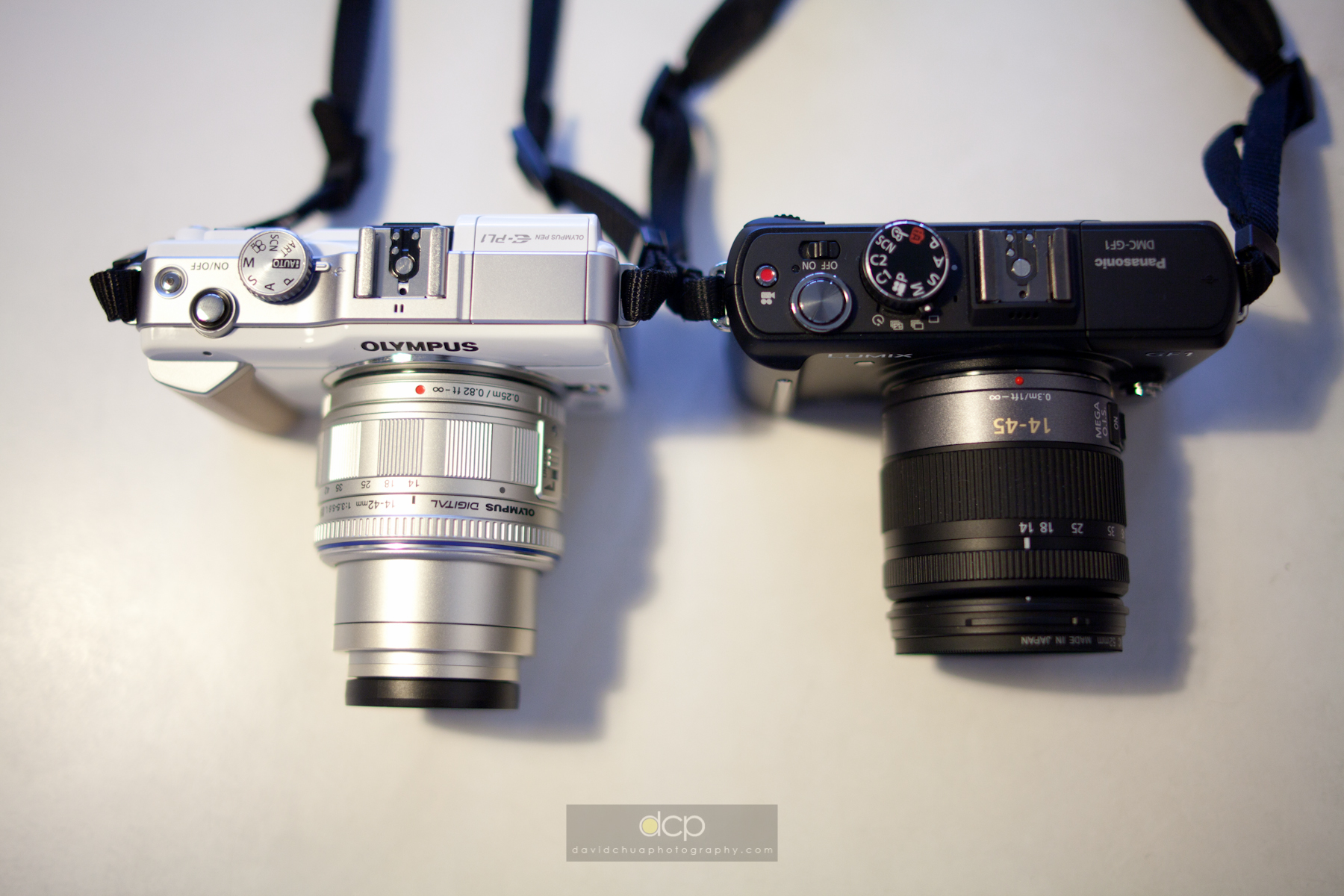
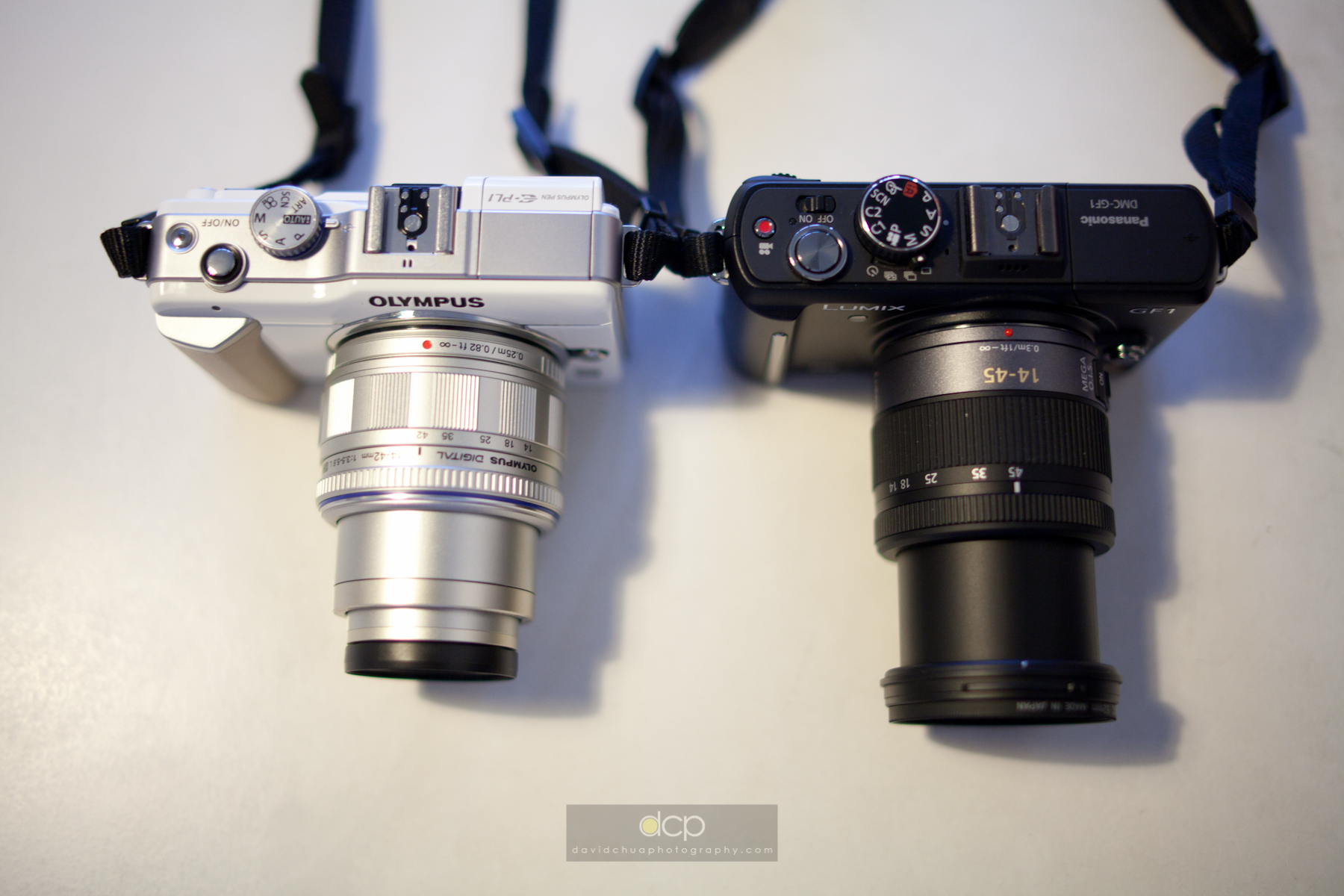
Verdict:
1. Panasonic doesn’t seem to understand the power of Micro Four Thirds is in it’s SIZE too. The pursuit of producing High Quality Cameras in the smallest size possible. Even Ricoh understood that! (Beautiful GXR!) It’s either we settle down on the size of a typical DSLR or we go really small.
2. The collapsible Olympus kit lens is even lighter than the ones that came with the E-P1 and E-P2 this time, having a plastic mount. The front element when extended still is wiggly though it does not affect it’s function at all. If you want something real solid, go for the Leicas. :p
3. The grip on the E-PL1 feels much better and more comfortable than the GF1. The GF1 is a little heavy for it’s smooth grip.
4. The shutter sound on the E-PL1 sounds nicer to me. The GF1 sounds clanky.
5. Though the GF1 seems quicker in releasing it’s shutter, results have shown it does not necessarily means nailing the focus better than the E-PL1.
Overall, the GF1 looks more classy, expensive and professional and the E-PL1 looks more plasticky BUT I personally prefer the lightweight E-PL1 and it’s overall image performance. Again, if I want something real professional, classy and small, it will be either the Leica M8 or M9.
As compared with the E-P1 and E-P2, this is what I discovered:
1. The E-PL1 is much sharper than both E-P1 and E-P2.
2. The AF on the E-PL1 is slightly faster than the E-P1 and E-P2. The AF is exceptionally fast with the NEW m-zuiko 9-18mm lens. This one I hope I can get a copy for further review at a later stage but I tried it once and it was really impressive!
3. The E-PL1 is more intelligent in handling backlit situations. It is also overall more intelligent than the E-P1 and E-P2.
I hope I have not made people more confused and all the effort I put in this post helps someone out there. 🙂 Cheers!
Bookmark me, subscribe to my blog, comment or email me to make a friend. Stay tuned for more updates very soon!
Related Posts:
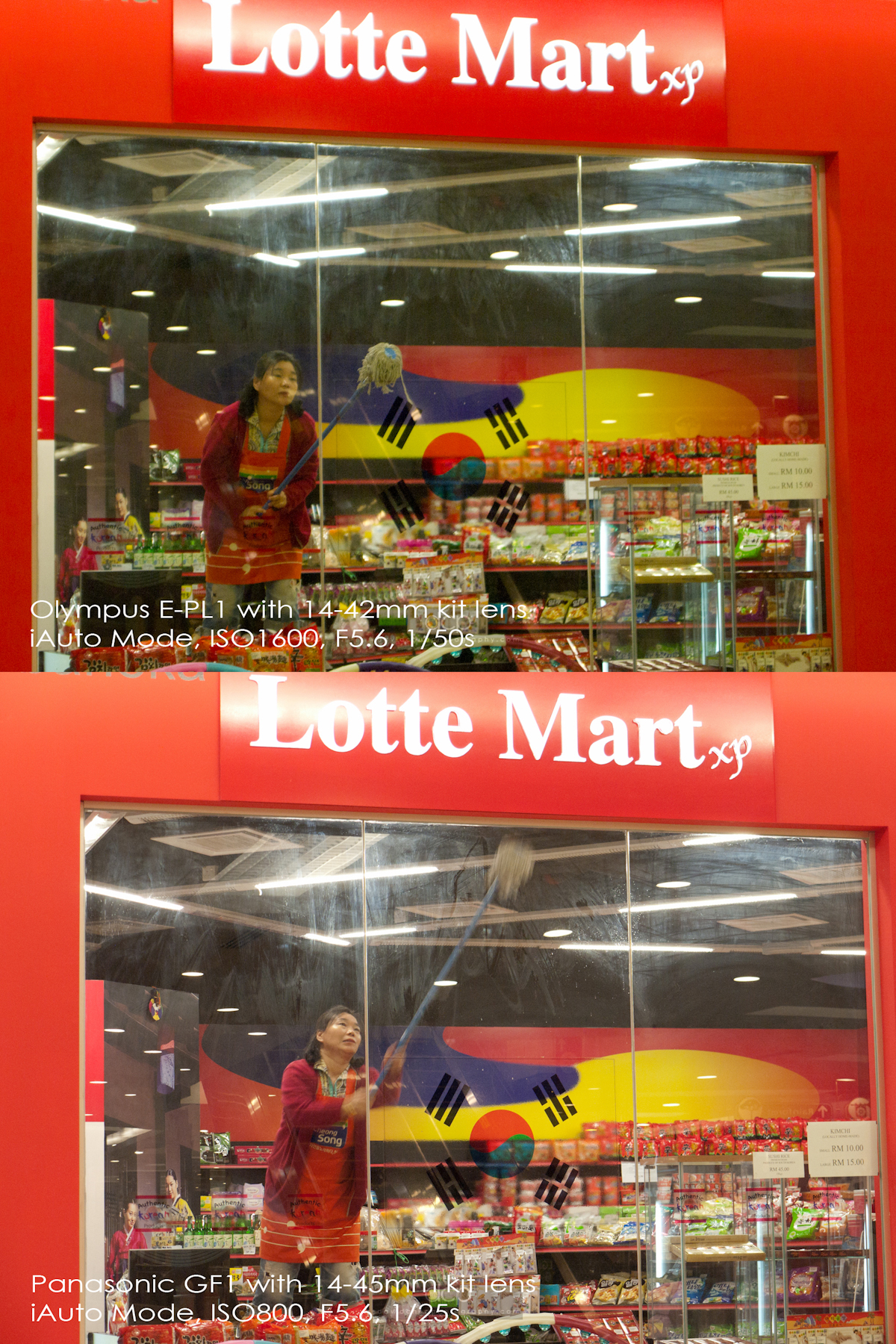
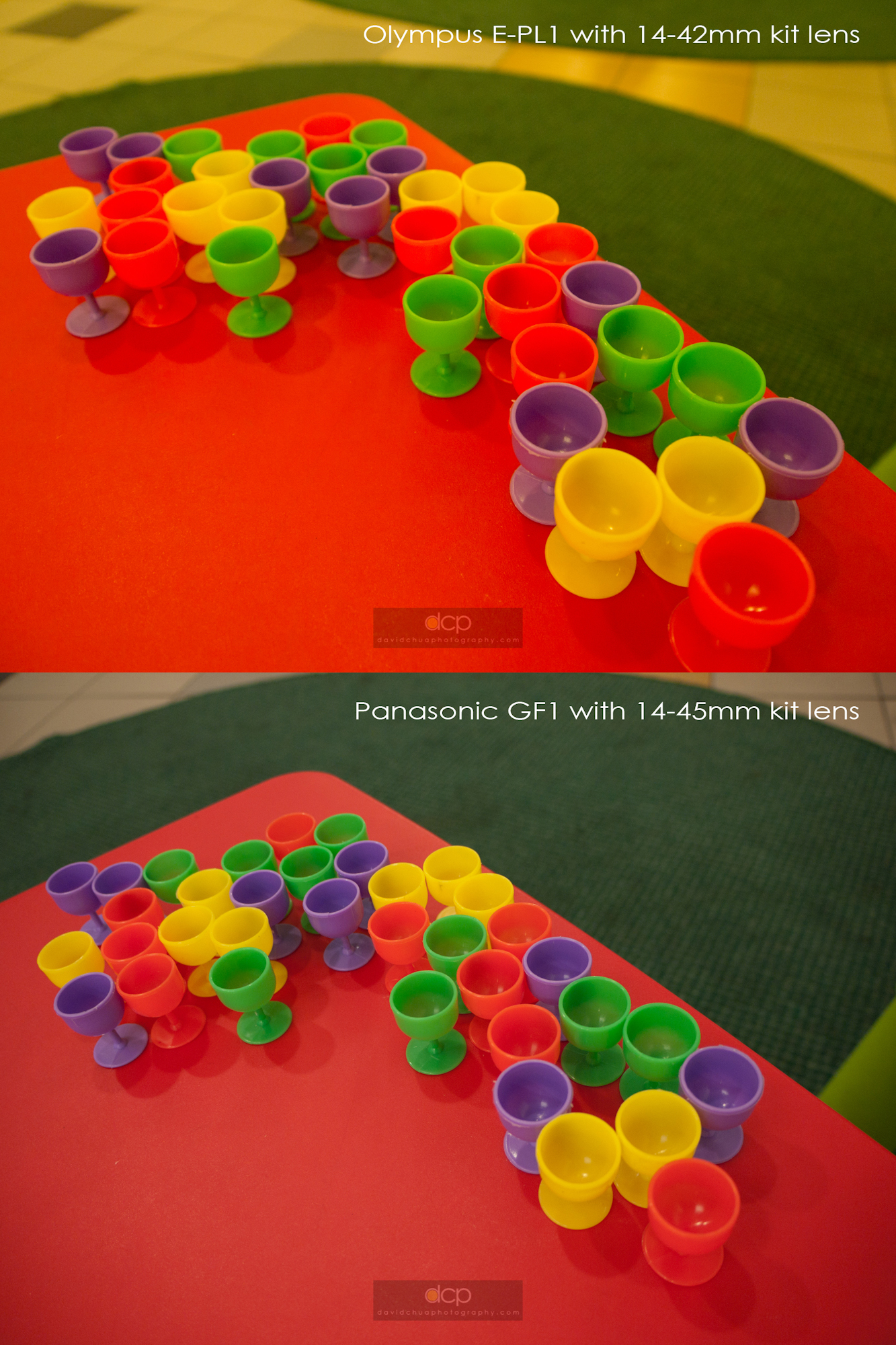
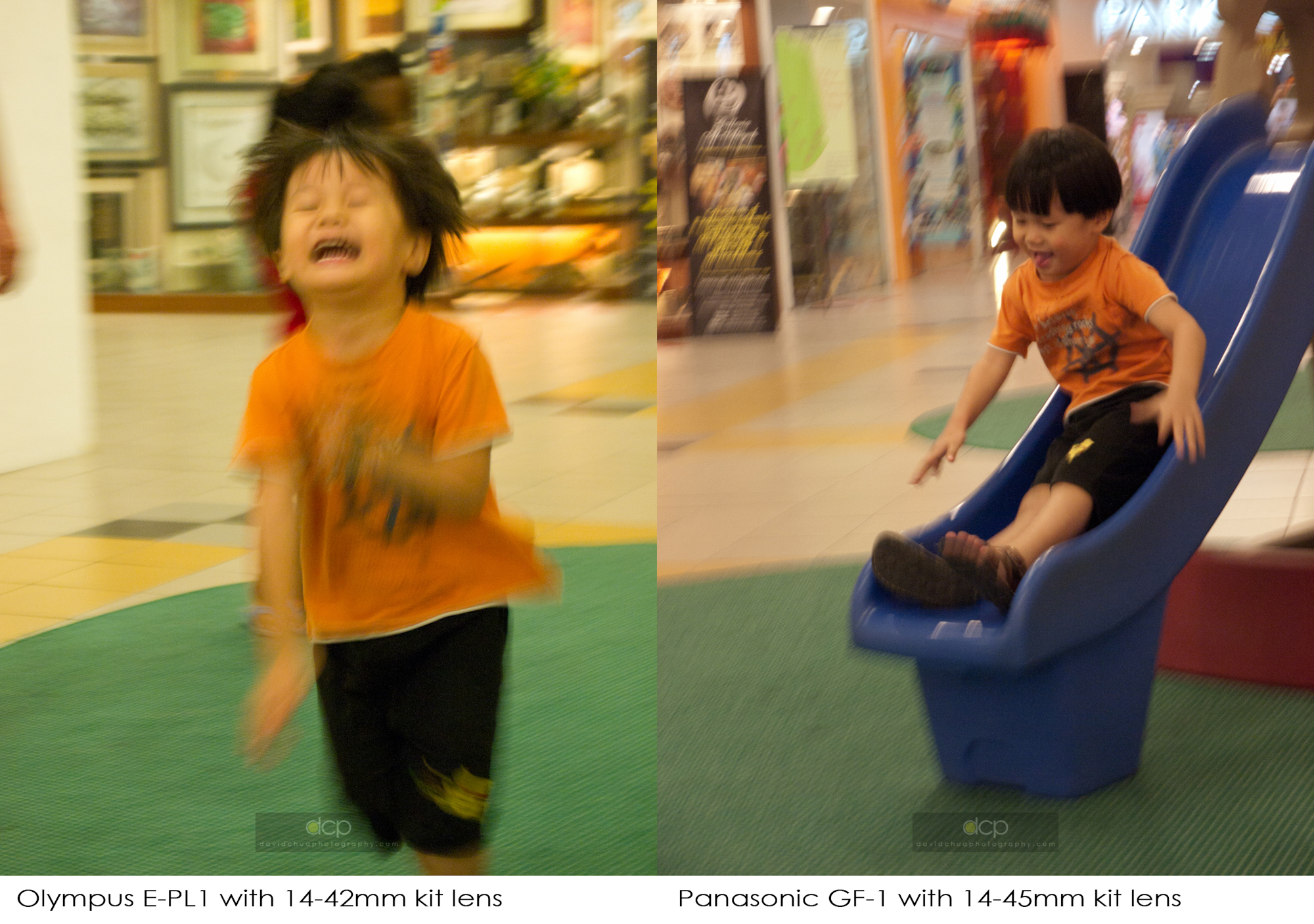

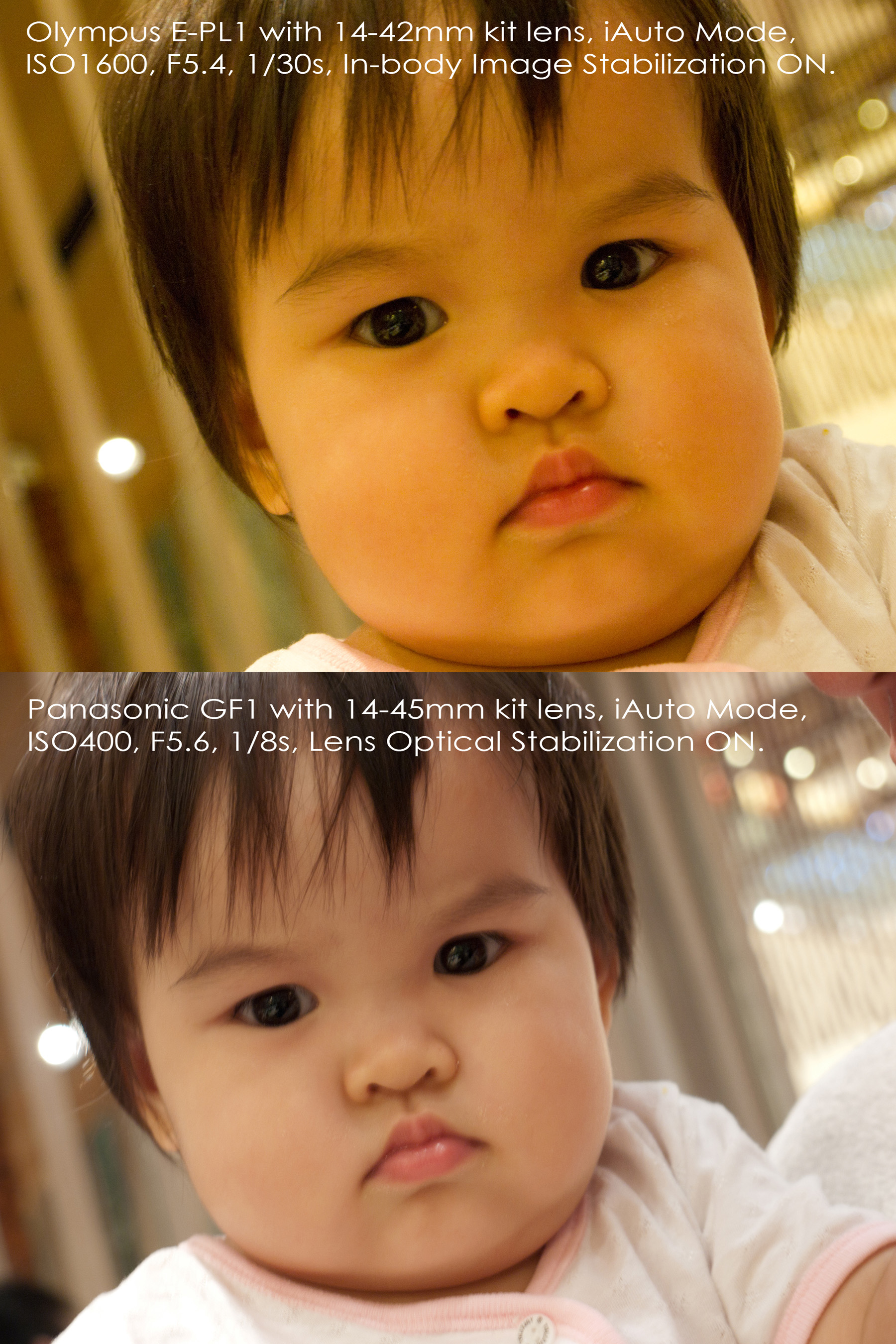
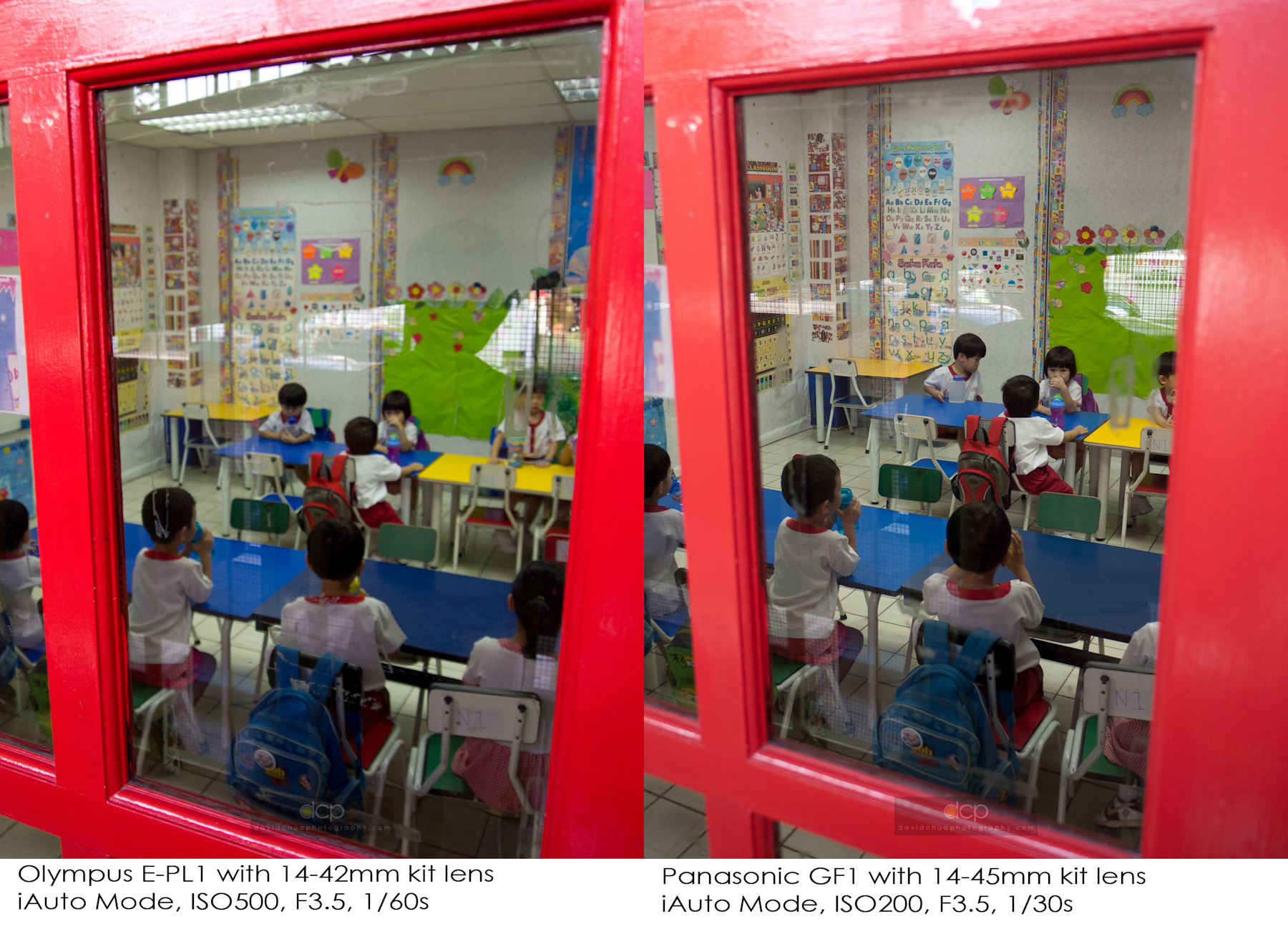

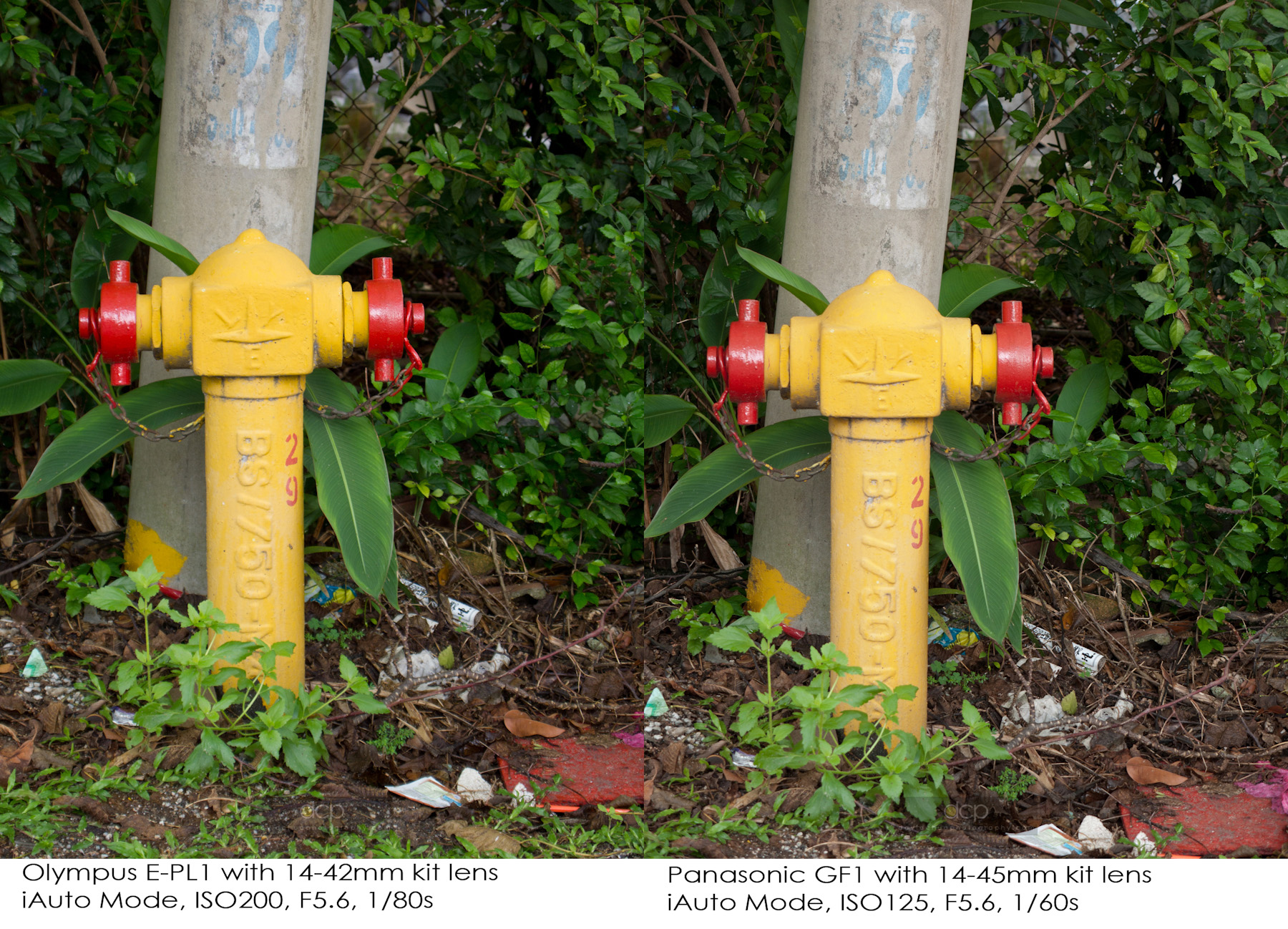
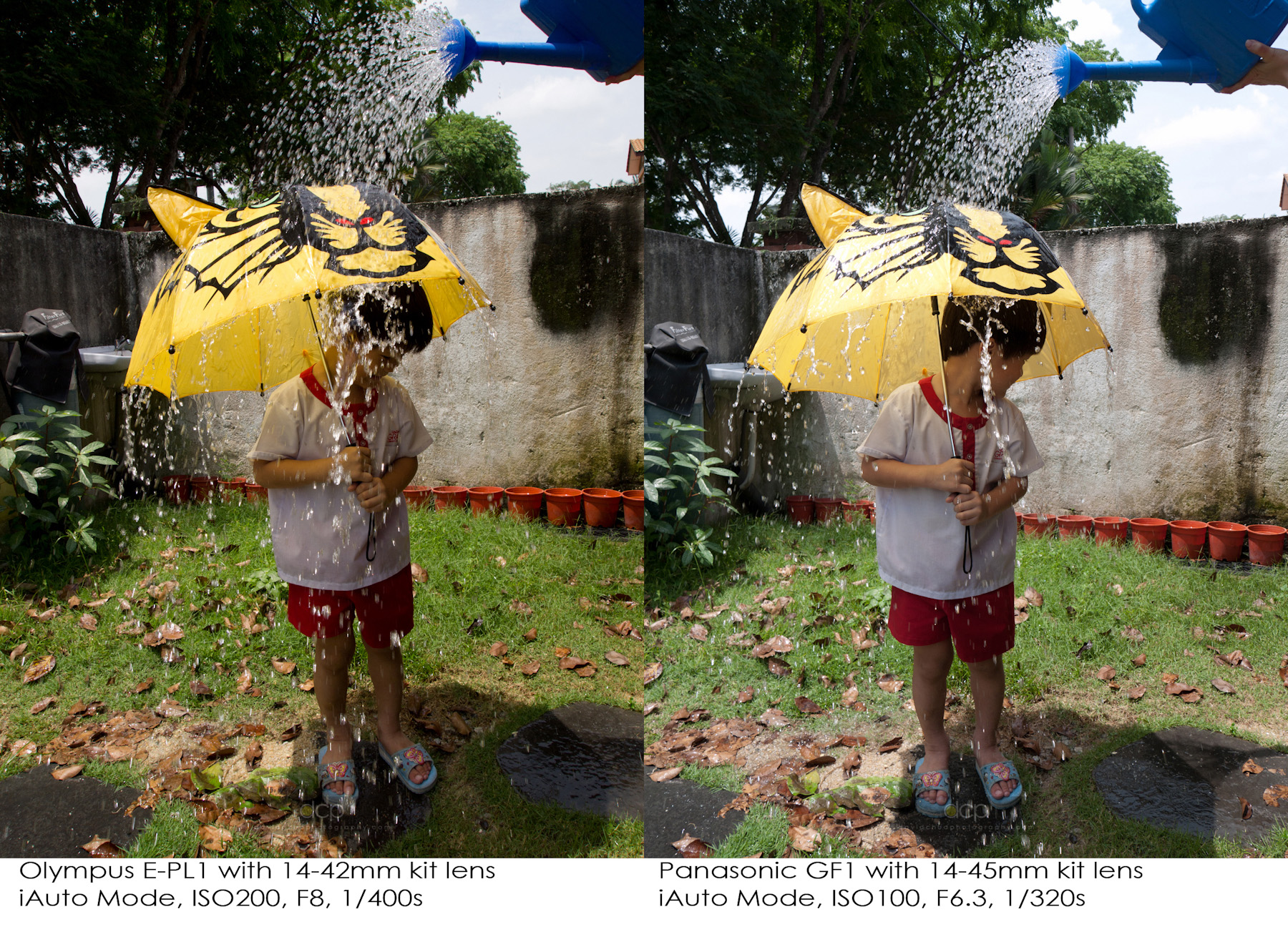

Great practical review! I’ve been researching between the E-PL1 & GF-1 for a walk-a-bout, everday carry camera and it’s a real close call. It’s too bad that we can’t use an electrical remote cord/switch on the E-PL1. Any rumours of a hack or an O/S update? The Oly EVF has a noticeable chroma/color drag when following a moving subject, while the Panasonic does not. Just a small, picky difference. I will probably go with the E-PL1 on a less $$ basis.
This is an excellent review. Much better ‘cut- through’ to the key comparisons. I currently have a Canon 450D (with three lenses) as well as my two older film Canon SLRs. I also have a Sony HD video camera (the first tape type). As with laptops/smart phones, I am keen to cut down on number and size of devices but keep quality. It would be great to merge my (occasional) need for family-type HD video with my more serious (but still amateur) desire for best possible quality stills. So I have whittled down my possible choice to: the Canon 550D or one of these M43 cameras. I am very excited by changing to the M43 format as I love the size, esp the Olympus with its collapsable lens, which makes it about the same size as the canon G11 but with lens choice. BUT my big question is am I going to regret opting for the M43 over the dSLR in terms of image quality? If this happens I will be back where I started as even if I take more pictures bec I will carry the M43 about more, I will frustrated by quality of results? Or sd I go another route entirely and get the Canon 550 plus a Canon S90 for real pocketability? Sorry for long question but frozen with indescion!
Guy,
The M43 is a good “all-in-1” small and portable choice which has high quality HD video and reasonably high quality stills as compared with Canon 550D (Canon 550D has a larger sensor and state of the art ISO12800 performance).
In addition, the M43 system can take in almost limitless types of old manual focus lenses including the 16mm TV lenses as well as old Olympus PEN lenses. The result of using these old, sometimes vintage film lenses is achieving the “old film look” in your images and videos. This is a great expansion from a small and portable M43 system in the long run.
The Canon mount can also accept certain film lenses but is limited to SLR lenses due to it’s larger sensor’s coverage. The lenses that can be mounted to Canon via adapters include Olympus OM, Nikon, etc. BUT NOT ALL work well on it. Some do have “infinity focusing issue” and some have “mirror clearance problem”. You would also need to install a manual-focusing screen like the split-screen and microprism type for accurate manual focusing. As for the E-P2 or E-PL1, the EVF-2 will do the job easily.
As for the S90, what I foresee is once you have tried the M43, you will most likely not consider the S90 anymore. You might just end up having a M43 and probably another Canon 550D in the future to “fill in the gaps” that the M43 is missing out, like the “super high ISO” and a mechanical viewfinder for Fast auto-focusing.
Having said all, IMO, the E-P2/E-PL1 with a FAST auto-focus M43 Panasonic lumix 20mm F1.7 lens is only a little larger than the S90 which comes with a much smaller sensor and non-interchangeable lens plus much lousier high ISO performance.
And as compared to Canon 550D, if you opt for the M43, you are trading off a mechanical viewfinder(faster AF), faster frame rates and “super high ISO” performance for SMALLER size and MORE third party lenses to play with.
JoepLX3,
Yes I did and the GF1 is disappointing in that.
Thanks for the review. Very useful comparison and simple enough to read. I am trying to decide which one to get (Olympus E-PL1 vs Panasonic Lumix DMC-GF1) and I will trust your review and get the E-PL1. Thanks again!
Denise,
The E-PL1 is lighter and smaller and produces better images than the GF1. The GF1 attracts people who like a more “solid” camera, and who do not mind the larger size. In addition, the E-PL1 has ART Filters which is really fun!
I’m wondering whether the P1 is worth getting instead of the PL1 as costco is selling it for $500. Thoughts?
For $500, it’s a good buy. If you are not planning to use manual focus lenses with the EVF-2 in the near future, it is a good bargain. I’ve taken lotsa nice pics with the E-P1 too.
how would you rank? 1 to 5, 5 being the best:
gh1, gf1, epl1, ep1, ep2
GH1: Best for Video, size is good for handling video shooting.
E-PL1: Best for Images
E-P2: Best for it’s looks with option of adding EVF2 and mic
E-P1: Best Retro Design
GF1: Most Bulky and Heavy
hi , writing from Italy.
Gf1 should have MACRO LENS LEICA (45 MM)…Do you know if OLYMPUS will produce a lens like this for PL1? If not…shall I mount this lens on PL1?
Thanks for your review. I want to leave my 20D at home and mainly move with this system but I have to take pics of my kids. Which one would you recommend? I mean they are not all the time moving around but in case…
Thanks!
Guillem,
For the bonus of having DSLR quality images from a much smaller camera, we’re giving up the privilege of the optical viewfinder(the traditional SLR mirror feature), which means we have to live with “Live View Shooting”. If you notice, Live View shooting is indeed slower than shooting with the optical viewfinder from the 20D you have because the lag between frames is longer. There is NO shutter lag in the mirrorless system. The lag I just mentioned is the lag between frames due to the refresh rate of the Live View.
I use the PEN in sequential mode and in P/A mode when shooting actions and I have NO problem in catching my kid in action though it is indeed NOT faster than a DSLR.
Alex,
Olympus has been slow in developing lenses. 🙁 You can mount the Leica one on the E-PL1 and use. I am not sure if you wanna wait for the Olympus version as it can be a long wait. The Panasonic Leica lenses are fantastic! If I need a macro lens, I have no qualms about getting one.
Thank you very much for your answer!
Now I was wondering one last thing, between a EPL1 (499€) and a EP1(399€), for which one would you go? I need somehow a fast focus but I love better usability.
Thanks again!
E-PL1 has better image quality: sharper and cleaner high ISO. But the Image Stabilization is one stop less than E-P1/2. And it has no “auto-rotate” feature for images, which I find pretty annoying.
E-P1 has dedicated dials for aperture/shutter speed adjustments which I like. And it’s much nicer looking in design and built. BUT it can’t take in VF-2 (external viewfinder). VF-2 is necessary for fast manual focusing with countless third party lenses available.
So, if you don’t plan to use manual focus lenses, and hardly shoot high ISO (or you don’t mind a little bit more noise in your images), it’s the E-P1. The E-P1’s images are still good. You can always do extra sharpening and noise reduction during post processing especially with Adobe Lightroom 3 available now, which is very easy to use.
To GLC,
I have a DSLR and the E-PL1. If you are looking to upgrade because “one of the biggest issues I had with my current Canon (P&S) is the time lag for focus and shooting” then you should NOT consider the E-PL1 at all. It is great for things that don’t move (too fast) but terrible for kids as you mentioned they would be your main subjects. It will be an exercise in frustration as by the time the AF locks on the kids will have moved. I tried it on my own baby girl and have resorted to going back to my DSLR (450d) for all baby shots except when she’s sleeping. Do yourself a favour and get a DSLR for photographing kids (even entry level ones). Everything else, the E-PL1 will do happily (except maybe sport hehe).
You sound more like a pimp for Olympus than an honest reviewer especially in the comments.
Pimp? Haha.. that’s a good one!
If you are referring to this GF1 vs E-PL1 post, I think the diff is pretty obvious that I personally prefer the E-PL1… so probably I sounded like a pimp (with no sales commission from Olympus)… but if you look at my latest post NEX vs E-PL1, I think I sounded pretty fair and to some extent obvious that I do prefer the NEX in some ways…
The BEST small digital camera to me is still the Leica M8/9, nothing comes close to that currently.
The only thing that make me doubt about the E-PL1 are the oversaturated reds I see in all reviews. Does this problem have a solution by configuring the menus?. Thanks for the review.
The over-saturated reds usually results from using the i-enhance mode. And in iAuto, iEnhance is automatically ON. To solve this, just use P/A/S/M mode in Natural mode or you can try Muted mode/Custom mode.
Great. Thanks for your quick response 🙂
hi david,
so it would seem that the epl1 has the edge on image quality over the ep1 and ep2. but to my eye, the jpeg images that the l1 produces seem a bit oversharpened and oversaturated (at default settings) compared with its more expensive siblings, whose images, though slightly softer, are more pleasing overall.
do you share my (rather subjective) impressions? and if so, is it possible to tweak the menu of l1 to achieve image characteristics identical to the other two?
thanks!
IMO, I prefer E-PL1’s sharpness. You can adjust sharpness, saturation, contrast, etc. in Custom Mode in the menu.
Hello David
I hit the right spot for the EPL1 vs Gf1 review. Still I have can’t take the final step on which one to buy…
I have been using A Panasonic LC5 since the day it came out. I always used manual settings, manual white balance because being an old camera, the auto mode was far from reliable. It is obvious upgrading from this camera, both the GF1, EPl1 is a giant leap. I feel a little more at home with the Gf1 but…
I am tilting more to the EPl1, however, the only thing that really bothers me is the cut down of the manual function direct accessibility, is it that bothersome?
For example, the white balance access, the MF/AF access, Aperture priority access…
With my old LC5 I used to turn A or M from the top and quickly change the F-stop or speed and take the pick…
And lastly how do you feel about the Samsung NX100. The I-function? The larger sensor. But not having an image stabilizer turn me off consider this camera…
Thank you for your patience and for the great review!
Henry
Henry,
The E-P1/2 have all the dials you like. If you can wait, the next PEN is coming out soon. One of my latest post showed that the E-P1 is pretty good and sufficient. I haven’t touch the Samsung so I can’t say much but personally, I do not like the image quality of the Samsungs.
As for the GF1, as long as you are prepared to do the manual settings and some post editing work in ur computer, it’s quite a nice camera to use. My personal preference is a camera that gives me consistently good AWB and files that need minimum tweaking, so I can spend more time shooting with less things to worry…
Hello David,
Thanks for the quick reply… You are saying that It is worth it to put the extra bucks and buy an e-p1/2 instead of the e-pl1 because of my preference to use the dials?
Since i am upgrading from the Lc5 which is had only buttons. I never used dials. I am just afraid that the manual settings on E-PL1 is too far away. Is it something that we can get used to?
I tried the E-pl1 in the store but not long enough because I found the seller intimidating!
Waiting for a Pen 3 means a few more months plus a few other review months etc..
It is hard to wait…
Thanks…
If you are used to dedicated dials and buttons for aperture/shutter speed, you might not like the E-PL1. The E-PL1 depends heavily on the 4 directional buttons to switch aperture/shutter speed/etc with numbers that’s roughly of the font size 8 on the small LCD. This is something you must get used to. Also, there’s NO “auto-rotate” feature for images.
I believe there’re lotsa used E-P1s which are pretty affordable out there. Even NEW, some stores are clearing the E-P1 stock, so you might find a bargain on it.
Still, Christmas is around the corner, you might wanna wait for the NEW E-Pxx which might appear anytime soon according to the rumors…
still thinking between Gf1 and Epl1,
major concern will be the focus at night,(may be night city pic or dim light rsestaurant,
many reviews has stated that Epl1 can’t focus even inside the restaurant?
But GF1 will have advantage over Epl1 because it have AF assist light?)
The GF1 has a small orange lamp on the front plate (to the left of the lens mount), meaning you don’t have to flip the flash to gain focus in low light
please advise.
thank
what is your comment on this review?
http://theonlinephotographer.typepad.com/the_online_photographer/2009/12/a-note-on-ep1-vs-gf1-focusing.html
at 1st i decided go for epl1 (really like the jpeg. but now i a bit worry,
hope u can give me a clearer tips.
cause no chance to try in this kind of situation, before final decision?
Wong,
First of all, if we just talk about AF, my personal experience is: NEX is the best. For me, at this point of time, if you compare price vs performance, the GF1 is out of the picture for me. It would either be the NEX or Olympus. Cause I think the GF1’s colors and AWB is the worst of all, it’s still pricey and it’s only a little smaller than the NEX (not much difference to me), it’s AF loses out to the cheaper NEX which has a bigger sensor even. As for the most compact and the BEST jpegs, it would be Olympus.
My comment on “theonlinephotographer”‘s review is: Having “faster” AF does not mean more accurate AF. The Olympus’s AF system is more “stubborn”, i.e. it has to be sure it achieve focus before activating. Thereby, I have to admit that in lowlight, it does lose out to the GF1 and NEX. I have also gotten more “out-of-focus” shots with the GF1 and NEX as compared to the PEN when I did side by side reviews with them.
In terms of accurate lowlight focusing, nothing beats the big Nikon DSLRs especially. When it comes to using such small cameras, our expectations have to be lowered, and to me, the PEN is good enough (if I really want extreme lowlight shooting, it would probably be the latest Nikon D7000).
The PEN fulfills the concept of being SMALL and having the BEST out-of-camera jpegs.
If you don’t mind it slightly bigger, I think the NEX beats the GF1 anytime!
If you don’t mind the size of a small DSLR, it would be Nikon D7000!
I hope I have helped you narrow down your search further and not confused you.
To compare AF between the PEN and GF1, I find it negligible when the NEX has a clearer difference when compared with the PEN (note: size also significantly different).
I am one of the confused guys between the EPL1 and the GF1, this page has confused me a little more. I respect DC’s opionion of EPL1 being better than GF1 but when photographs are see without magnification it seems that GF1 images are more sharp. For eg the flower photo. The leaves look more natural in GF1 then EPL1. same is the different color glasses photo. iN epL 1 the glasses edges are not shart compared to GF1.
Someone please guide me if i am wrong as i need the buy a camera and finish it off
I think the preference for color is individual. Many do prefer the GF1’s colors. The GF1 could be slightly sharper by default. You can also increase the E-PL1’s internal sharpness setting. Both cameras’ images are sharp, to try to differentiate, it’s like splitting hairs. Both camera’s image colors are quite different. I think if you judge based on your preference of colors, it’s a lot easier. As for ergonomics and features, again it’s of individual preference.
One impressive thing I’ve tried was to use the panasonic 20mm F1.7 lens on the PEN. The results are amazing! And the panasonic mft lenses are generally sharper than the Olympus’s ones.
If you like Olympus’s colors and want ultimate sharpness, you may wanna use panasonic mft lenses on the Olympus bodies.
Thanks a lot for your quick reply. Unfortunately in India you dont have much choices are people here are not camera freak. So i cannot get panasonic lens with olyumpis body.So tommorow morning i will go and buy the EPL1. I have ordered the GF1 also with 20mm pancake lens. SO i think i will land up with both the cameras. I would need an ultimate guidance from you. The pancake lens is around usd 400 and the whole camera with lens around usd 700. so do you reckon i should buy only the lens or the camera with lens.
Just want an ulitmate camera to fit in pocket and take amazing pictures. So please guide me thru.
You can get just the panasonic 20/1.7 if you reckon that you prefer Olympus’s colors. No point having 2 camera bodies unless you wanna carry them all with you. For other focal lengths, you can always switch to your kit zoom lens.
hi david,
thank for u advise!
finally i holding epl1 with me now,
not regret the pic is really sharp and even night focus is not as bad as i thnk before.
manage to focus even in a dim light rsestaurant.
thank.
one more think, when i rec video with art filter, it become vert lag, on the camera when recording and play back, is it normal, or just my unit is defect?
thank
how ’bout compare between olympus epl-1 and panasonic G1?
It’s normal for Live View to be moving stunted when it’s in Pinhole/Diorama Video mode.
GF1’s images should be slightly better than G1. But both G1 and GF1’s images should be very similar… You can also go to http://www.dpreview.com to source out the high res images of G1 for comparison.
Hello David,
Yes you are right there is a bargain on the E-p1 so I am thinking of purchasing it but one thing is halting me is its Movie mode…
In E-P1 movie mode, is the the Aperture priority and the metering system enough? or
the additional Manual function of the E-PL1 and E-P2 will greatly enhance the flexibility of shooting short movies?
Henry
Henry,
If you are serious into video, do consider the E-P2/L1 cause the option of the additional mic is important for high quality sound capture. The additional modes available for video are also helpful.
I can get the P-1 with 17mm and optical viewfinder for the same price as the E-PL1 w/zoom – which is the best for now and to build on?
Michael,
My preference is the Panasonic 20mm F1.7 lens over the Olympus 17mm F2.8, even if it means I gotta pay extra for it to mount it on my PEN body. The E-PL1 has visible 1-stop ISO advantage over P1/2 except that you gotta tolerate it’s menu interface (without physical dials like the P1/2), as well as no “auto-rotate” feature. Also, it’s I.S. loses to P1/2 by 1-stop. The kit zoom is useful as it’s compact (collapsible), covers effectively 28-84mm, and can do macro shots. It can be a good general lens. As for lowlight shooting, the Panasonic 20/1.7 is fantastic!
So it sounds like on the camera you lean to the P1 – but prefer the 20mm for the pancake –
hey david,
i got the EPL1 and so far i am very happy with it. I need to shoot lot of photos in macro mode for my office work. I am into exports of autoparts for cars and trucks and need to click photos of my samples which are very small like bolts and nuts. can you suggest a good micro lens to go with my EPL1. Somone suggested me to buy a nikon d5000 with a micro lens but dont wanna carry so many cameras. so please advise.
You can use the E-PL1 with closeup filters on it to achieve the macro result you want. See here: http://www.bizrate.com/camera-accessory-kits/olympus-pen-epl1-macro-filters/
Also : http://www.flickr.com/photos/25560548@N06/sets/72157623438494219/
http://www.omuser.com/viewthread.php?tid=132335 (Chinese site but see the pictures)
Most of these guys use the Panasonic 20/1.7 lens with closeup filters. You can also get a 40.5mm closeup filter for your 14-42mm kit zoom lens. See here: http://compare.ebay.com/like/310220770378?ltyp=AllFixedPriceItemTypes&var=sbar
I prefer the panasonic 20mm F1.7 lens to Olympus 17mm F2.8 lens. It’s sharper and can do quite close focusing distance. I prefer the Olympus PENs’ reproduction of colors to Panasonic and Sony.
I bought the E-PL1 yesterday. 24hrs later, I can already tell I’m not going to be happy with it. I have a Leica M6 and a Konica Hexar RF. I’ve been waiting for a long time for a mirrorless digital camera system which I can afford to commit myself to. If I thought the Epson RD-1 was expensive, you can imagine my despair when Leica released the M8. The M9 is a beautiful dream for me. Thus I’d basically given up on the idea and knowingly started my collection of medicore consumer digital p&s compacts…until I read about the micro four thirds system. I was sure it was what I had been waiting for. Based on research and product reviews, I chose the Oly E-PL1 over the E-P1, E-P2, and the Panasonic Lumix DMC-GF1. Although SONY NEX-5 is not MFT system I’d still consider it as an option. Leica’s X-1 is a handsome camera, but the fixed (telescoping) lens takes it off my list.
After using the E-PL1, I’ve decided the camera looks and feels cheap. The camera body and the 14mm-42mm kit lens are plastic. The goofy-looking telescoping lens has loose external focus. Totally unacceptable. Not sure what I’ll do next. I want a camera that has the weight and feel of the M6 or the Hexar RF; perfect size and weight, with solid build and discreet finish. E-PL1 is a bit smaller and lighter than I expected. I’m going try the Lumix GF1 next. I wish the Leica X1 was interchangeable M mount.
Too obvious, but I’ll mention it anyway. The M9 is the only real choice. Anything else is a compromise.
There’s nothing closer to your M6 and Hexar than the M8/9. To me, I’m happy with my M8 cause it can be used as a infra red camera as well. The E-P1/2 has much better finishing and built than the E-PL1. For the price, the digital PENs are useful for all who aren’t willing to pay for the Leica.
I find your review very informative. I’m about to order an E-PL1 but I’m not sure if I should wait for the next PEN or the Panasonic GF-2. If the price will be much higher, I’d just rather buy the E-PL1. What do you think?
Also, if I do indeed purchase the E-PL1, where can I buy micro 4/3 lenses? I like your suggestion to use Panasonic lenses on the Olympus body.